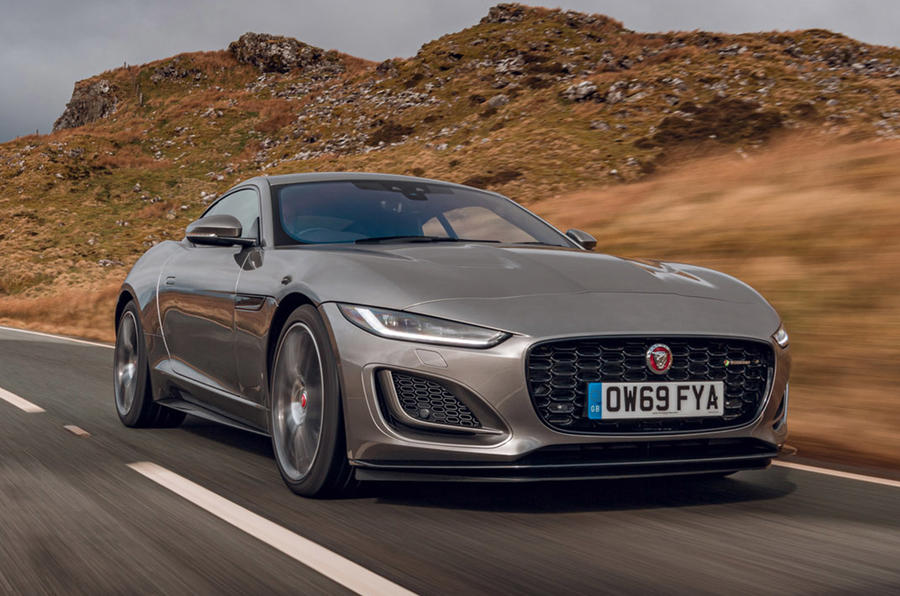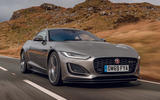What is it and where is it going? Those are easy questions to answer in this particular case. It’s a Jaguar F-Type coupé with a stonking great V8 and I’m driving it to the Jabbeke highway, a stretch of motorway in western Belgium with which Jaguar – and this magazine – has some history.
But for Jaguar generally, maybe ‘where is it going?’ is harder to answer, particularly for the F-Type. There’s the Jaguar range as it exists now, and we know there’s a new XJ due, all-electric, expensive, luxurious and stylish. But beyond that, what will be for Jaguar or its sports car? Who knows? Not me. Not you?
Does Jaguar? Once, it had a very clear direction. In 1961, at the Geneva motor show, it revealed the E-Type and, well, I wasn’t there, but I hear it went down quite well. And in the same month, testers from The Autocar came here to Flanders, where a straight stretch of dual carriageway between the town of Jabbeke and the coastal city of Ostend was flat and had routinely shown itself to be quiet enough for obtaining high-speed road test figures.
In its Autocar road test, published on 24 March, just a week after the car was unveiled to the public in Geneva, the E-Type hit 150mph in our hands – and with a slightly hooky engine – on this very road. The car from the show, a coupé with the registration 9600HP, was the car we had tested.
Another variant, a green roadster, registration 77RW (the road test car for The Motor and still owned by Jaguar today), was driven down to Switzerland overnight during the show itself by Jaguar test engineer and racer Norman Dewis when rampant demand for test drives looked like overwhelming Jaguar’s capacity to handle them.
Excluding the Channel crossing but including a drive through central London and before motorway networks were as widespread as today, Dewis still managed to average 68mph between Jaguar’s base in Coventry and the show.







































Join the debate
Add your comment
No longer Jaguars
Today's jaguars are an alien species. I'm in the market for a new salon and the S Class is favourite.
Seriously - you say you dont
Seriously - you say you dont know where they are going.The XJ is coming, we all know thatThe J-Pace is coming, an EV Large SUV, Again, OLD NEWS
The XE/XF are being replaced with a new One Car range, EV, PHEV and ICE will be run Again, old News.The F-Type IS being replaced with an EV, again, OLD NEWS
RUMOURS
New Smaller Sports car with emphisis on sports rather that GT
New small Car, to become the entry level car, with an SUV alternative, based on teh new Baby Range Rover, and Freelander 3 SUV.
JLR has the capability to move into a number of new niche markets and now that they have a new forward thinking designer, and money to do the cars they should have been doing, then the future is looking good
Shall i mention, the JLR Classic "might" start the rebirth of older models, like a lot of brands have started to do, limited run, old cars with modern tech and running gear, Callum has done the Callum MK II, how about the Jaguar MK II or MK X, how about a run of D-Types, or E-Types, the buyers are there, many have spend £100k plus on having JLRC do cars already, so to do more would be no issue, however they are rather busy doing what they are doing now, so an expansion and move might have to be on the cards.
This all fine but what is it like inside.
How can one compare this to an E Type except for speed and performance. Back in 1961 when the EType was released it was not only outstanding in performance and speed but it offered outstanding beauty and originality that could not be mistaken for an Aston Martin or any other sports car for that matter. This was not only on the out side, but the interior looked like no other brand car of it's time. The instrumentation, dash and steering wheel were in the vein of a fine quality watch and not some regular looking car interior of the same price. The spectators could not believe that the E Type jaguar which looked better than the most expensive looking quality sports cars in the world, outside and inside, was in fact within reach of most people, who could have only dreamed of owing such a beautiful car. This is just an old Jaguar lover and owner speaking, and one that can't and won't accept a car for just it's name and image. Back in the early sixties there were no speed limits on the motorways, so a car that could do nearly 150mph was very attractive to the speedsters. Today I can't be a speedster like I was back then, but they are still selling me speed and performance, and offering me a lot less of what the E Type gave me then.